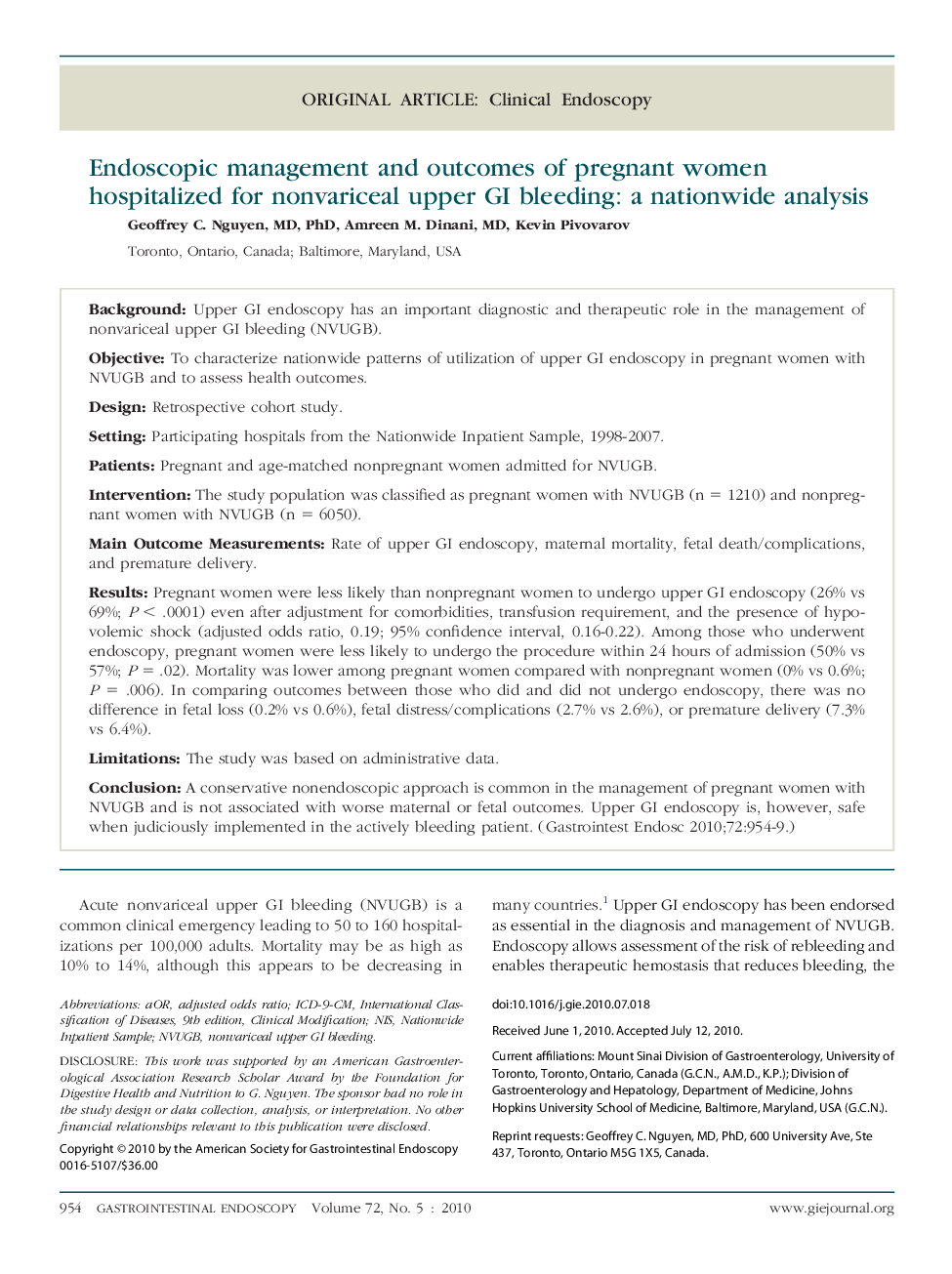| Article ID | Journal | Published Year | Pages | File Type |
|---|---|---|---|---|
| 3306382 | Gastrointestinal Endoscopy | 2010 | 6 Pages |
BackgroundUpper GI endoscopy has an important diagnostic and therapeutic role in the management of nonvariceal upper GI bleeding (NVUGB).ObjectiveTo characterize nationwide patterns of utilization of upper GI endoscopy in pregnant women with NVUGB and to assess health outcomes.DesignRetrospective cohort study.SettingParticipating hospitals from the Nationwide Inpatient Sample, 1998-2007.PatientsPregnant and age-matched nonpregnant women admitted for NVUGB.InterventionThe study population was classified as pregnant women with NVUGB (n = 1210) and nonpregnant women with NVUGB (n = 6050).Main Outcome MeasurementsRate of upper GI endoscopy, maternal mortality, fetal death/complications, and premature delivery.ResultsPregnant women were less likely than nonpregnant women to undergo upper GI endoscopy (26% vs 69%; P < .0001) even after adjustment for comorbidities, transfusion requirement, and the presence of hypovolemic shock (adjusted odds ratio, 0.19; 95% confidence interval, 0.16-0.22). Among those who underwent endoscopy, pregnant women were less likely to undergo the procedure within 24 hours of admission (50% vs 57%; P = .02). Mortality was lower among pregnant women compared with nonpregnant women (0% vs 0.6%; P = .006). In comparing outcomes between those who did and did not undergo endoscopy, there was no difference in fetal loss (0.2% vs 0.6%), fetal distress/complications (2.7% vs 2.6%), or premature delivery (7.3% vs 6.4%).LimitationsThe study was based on administrative data.ConclusionA conservative nonendoscopic approach is common in the management of pregnant women with NVUGB and is not associated with worse maternal or fetal outcomes. Upper GI endoscopy is, however, safe when judiciously implemented in the actively bleeding patient.
